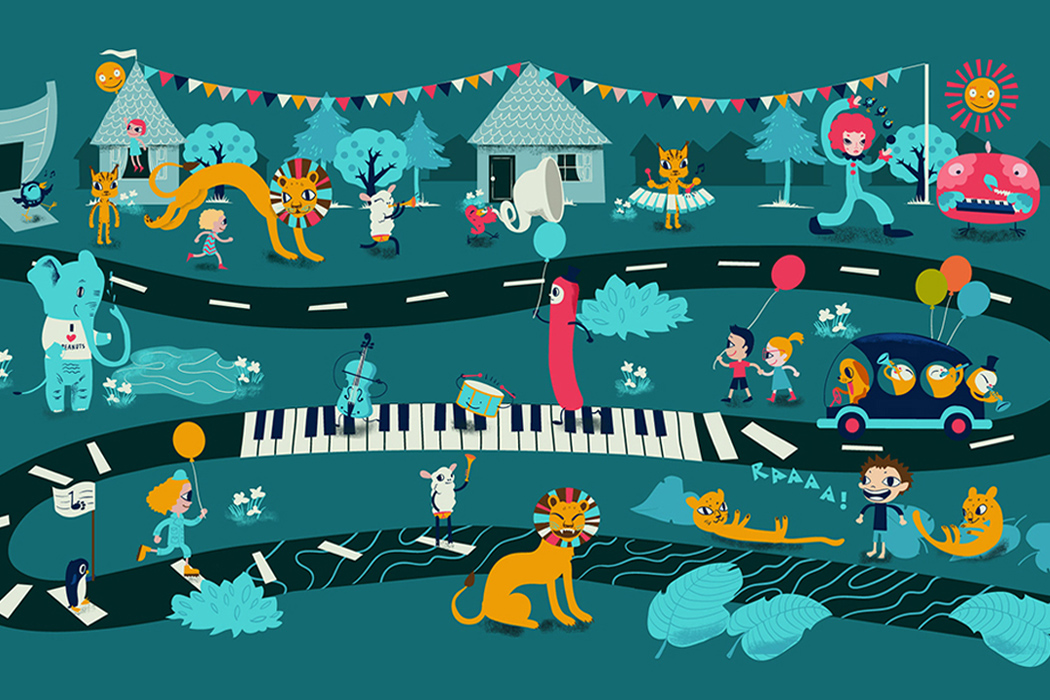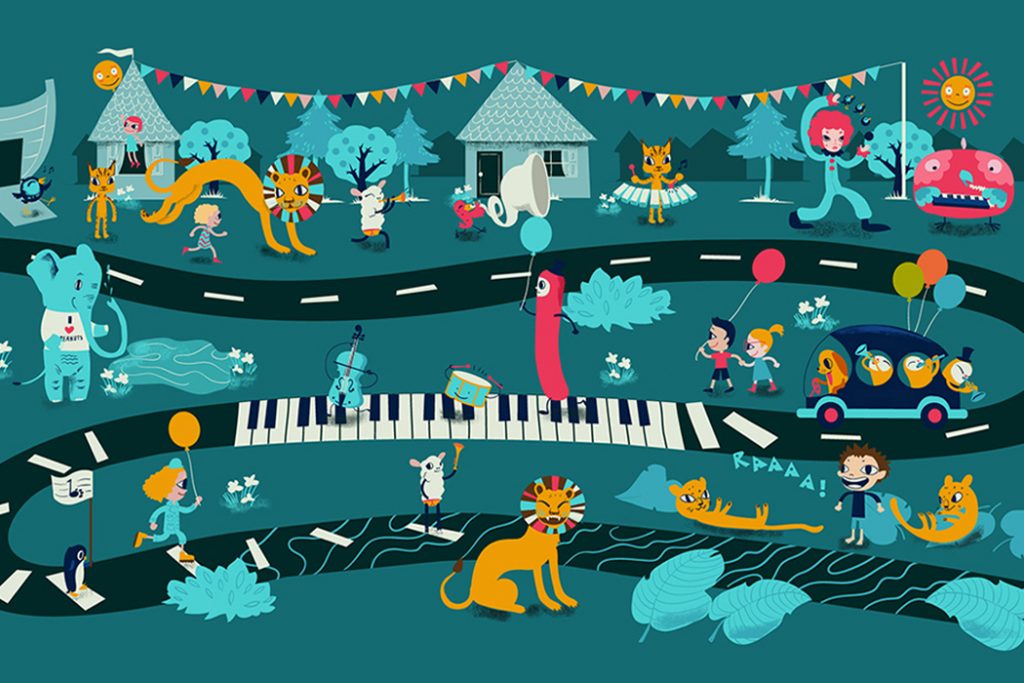
+ Pursue your dreams faster with a Soundfly Mentor! Share your musical goals with us and we’ll pair you up with a professional musician, engineer, educator, or music industry veteran who will help you achieve them in a customized four-week session.
Inventive, exciting music plus an educational angle?
Now that’s a Soundfly super combo!
Here’s a topic we’ve wanted to cover for quite a while, because, well, while a lot of orchestral music has the power to enliven an audience and electrify their senses regardless of their background of understanding, so much of it tends to fall flat to untrained ears. That’s why we absolutely love it when composers go out of their way to make work that is accessible to as many people as possible — especially including children.
Whether the piece was composed to introduce children to the magic of the orchestra, to pique their interest at a young age, or to simply make something fun for the sake of putting smiles on faces, these works represent an incredible way to take a complicated art form and infuse it with the impactful and emotional power of joy.
In this article, we’re honoring those efforts.
Benjamin Britten’s The Young Person’s Guide to the Orchestra
It’s somewhat strange to think that Benjamin Britten is the man behind one of classical music’s most beloved pieces for children when you consider just how dark and brooding most of his other compositions are. With a theme based on the “Rondeau” from Henry Purcell’s 1695 incidental music to Aphra Behn’s play Abdelazer, this work written for children has become one of Britten’s most famous compositions, second only to his groundbreaking opera Peter Grimes.
The Young Person’s Guide to the Orchestra was written specifically to accompany a film that introduced children to the magic of the orchestra. In the film, a theme is played first by the entire orchestra and then again by each section individually — the woodwinds, brass, strings, and finally, percussion. The instruments then come together and play a fugue, before returning to the main theme.
Written in 1945, The Young Person’s Guide to the Orchestra is generally understood to be a kind of lighthearted “healing” project for the British composer. Shortly before its composition, Britten had traveled to Germany to perform for holocaust survivors. The experience was so profoundly disturbing that Britten wasn’t able to talk about it in interviews for decades, only opening up about it at the end of his life.
Wes Anderson used the piece extensively throughout his coming-of-age dramedy, Moonrise Kingdom (in a variety of ways that make classical columnist Russell Platt pretty darn excited), by his own admission, inspired by the enormous effect it had on him in his own youth.
Sergei Prokofiev’s Peter and the Wolf
Written in 1936, Peter and the Wolf is Sergei Prokofiev’s most famous work and features one of music’s most memorable melodies. Similar to Britten’s piece, this one was also written as a way to introduce children to the orchestra. But the main difference between the two is that Prokofiev’s piece focuses on singular instruments instead of entire sections. It was commissioned by Moscow’s Central Children’s Theater, a place Prokofiev had regularly taken his sons.
The performance directions cleverly call for each character in the story to be represented by an orchestral instrument; the bird by a flute, the duck by an oboe, the cat by a clarinet, the grandfather by a bassoon, the wolf by three horns, Peter by the string quartet, and the shooting of the hunters by the kettle drums and bass drum. Featuring a dark humor consistent with Russian literary tradition, Peter and the Wolf ends with a narrator telling the audience:
“If you listen very carefully, you’ll hear the duck quacking inside the wolf’s belly, because the wolf in his hurry had swallowed her alive.”
Many American versions of this story skip that part.
Camille Saint-Saëns’ The Carnival of the Animals
Written by French Romantic composer Camille Saint-Saëns, The Carnival of the Animals was composed after a disastrous year-long concert tour of Germany in 1885. Saint-Saëns made no secret of the fact that the piece was written for fun, and this was most likely a reaction to the miserable time he had out on the road.
Similar to Peter and the Wolf, this piece draws connections between animals and orchestral sounds. While the composer clearly enjoyed writing this piece, he was also famously ashamed of it and refused to let it be published in his lifetime. So in accordance with his wishes, it was finally published after his death in 1921 and became his most important and influential work. He might’ve had a bit more fun had he known it was going to be a success.
Get 1:1 coaching on your songwriting from a seasoned pro.
Soundfly’s community of mentors can help you set the right goals, pave the right path toward success, and stick to schedules and routines that you develop together, so you improve every step of the way. Tell us what you’re working on, and we’ll find the right mentor for you!




